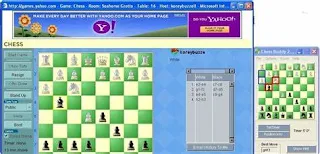In the early 2000s, online gaming was gaining traction, and chess players were joining the digital landscape with enthusiasm. Among the most memorable tools that emerged in this era was ChessBuddy, developed by Playbuddy. This program revolutionized online chess assistance, offering players a unique experience that combined skill-building with support in competitive settings. ChessBuddy’s origin and eventual disappearance mark an interesting chapter in the digital chess world, illustrating the rapid evolution of gaming software and the challenges faced by chess engines in online communities.
The Origin of ChessBuddy
ChessBuddy was created as a companion for online chess players who sought an edge in games hosted on various platforms, including Yahoo! Chess and Pogo. Playbuddy, known for producing “buddies” for a range of games, developed ChessBuddy to assist players by analyzing moves and suggesting strategies.
While ChessBuddy wasn’t a full-fledged chess engine like Stockfish or Fritz, it was notable for its accessibility and user-friendly design. ChessBuddy appealed to casual players wanting to sharpen their skills or overcome tough opponents online. Unlike more complex engines, ChessBuddy offered a simpler interface with quick, easy-to-understand advice. Its target users were those who might not fully understand the intricacies of competitive chess engines but wanted a tool to boost their performance and help them make smarter moves.
Popularity and Controversy
At its height, ChessBuddy was widely used, especially on casual gaming platforms. Its popularity stemmed from its ability to enhance a player’s skill level without the steep learning curve associated with professional-grade chess software. However, its ease of access and effectiveness in online games sparked controversy. The very quality that made ChessBuddy popular — its assistance in live games — made it a point of contention among chess purists. Some players felt that using ChessBuddy gave users an unfair advantage, leading to debates on ethical gaming and the distinction between learning aids and cheating.
Many online platforms eventually began restricting or banning external assistance software, and ChessBuddy users faced bans or warnings on platforms like Yahoo! Chess and Pogo. Over time, platforms introduced anti-cheating algorithms and detection methods, specifically designed to identify and limit assistance software, which pushed ChessBuddy and similar tools to the fringes.
Decline and Disappearance
As competitive chess programs like Stockfish and the open-source Lichess engine gained prominence, ChessBuddy’s relatively simplistic approach was overshadowed by stronger, more complex chess engines. Online chess platforms also implemented sophisticated anti-cheating measures that flagged any non-human behavior. As Playbuddy saw declining usage and increased detection on popular platforms, it became challenging for ChessBuddy to maintain relevance or function effectively.
By the late 2010s, ChessBuddy had faded from the digital chess scene. With a dwindling user base and increasingly sophisticated online gaming rules, Playbuddy stopped updates, and ChessBuddy became a relic of a bygone era in online gaming history.
Legacy of ChessBuddy
ChessBuddy played an essential role in the evolution of online chess software by creating accessible tools for casual players. It raised questions about the line between improving skills and cheating, setting a precedent for discussions that are still relevant today in online chess communities. Its story is a reminder of the rapid pace of technology in online gaming and the challenges that arise in maintaining a fair playing environment.
Today, ChessBuddy is remembered fondly by those who used it as a stepping stone into more serious chess. Although it no longer has a place in the online chess landscape, its legacy lives on as a symbol of early online gaming and the joys of a simpler approach to a complex game.


No comments:
Post a Comment
Note: Only a member of this blog may post a comment.